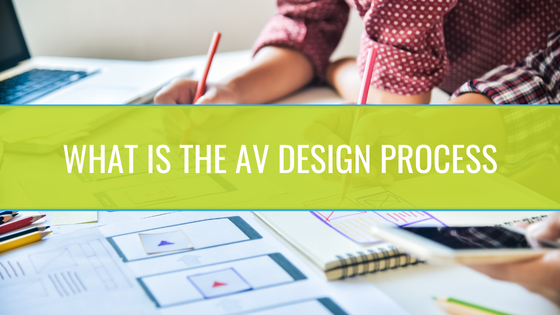Design is only one part of the AV integration process, but it's an important one. It's during this phase of the project where the exact system components are selected, the solution is visualized and the project's scope is made clear. With this information, project timelines and budgets can be put together, giving both the integrator and the client a clear plan of action.
Given the importance of proper AV system design, the process is best handled by a certified designer. One of the industry's most popular certification tracks is AVIXA's (Audiovisual and Integrated Experience Association) CTS-D track because the industry is always in need of talented designers. And also, since AV design itself is made up of several steps, each must be completed according to best practices.
In short, there's a lot to cover during the AV design process, including:
- Needs analysis
- Site survey
- Selecting the system's components
- Creating project drawings
- Producing essential project documentation
AV Design Starts With a Needs Analysis and Site Survey
Before the actual design begins, the designer needs some information to work with. This information is gathered during a needs analysis meeting with the client and a site survey. Together, these planning tasks provide the following design-relevant data:- What the client needs their AV solution to do - During the needs analysis, the client and integrator will work together to match the client's wants and goals with the right solutions. In most cases, the client presents a problem they're having with their organization that they hope AV can solve. The integrator walks through the problem to determine the best way to approach it with the ideal AV solution.
- The client's expectations and conditions - It's also during this meeting that the integrator will establish the client's budget, desired timeline, and any other important conditions. For instance, do they want a future-proof solution, or a low-cost one? That may change the integrator's approach.
- The layout and size of the client's facilities - During the site survey, the integrator will inspect the client's facilities and any room that's to receive AV equipment. They will record room sizes and layouts, taking note of anything that may pose an obstacle to the design or installation team.
- Relevant lighting, acoustic and structural information - The integrator will also account for each room's lighting and acoustical qualities. Is there a lot of natural light present? Is the room made from acoustically reflective materials like glass? Is there anything in the room that could obstruct a person's view? Does it look like hardware can be mounted where it would be most effective?
During AV Design, the Technician Determines What Products Will Go in the Space
The initial phase of AV design includes taking information from the needs analysis meeting and site survey and matching those up with the right products. AV design software can help with this, as most include a product library with exact product specifications. However, it still falls to the designer to choose the right mix of AV components. This includes displays, video conferencing, streaming and recording equipment, switches, speakers, microphones, amplifiers, digital signal processors and control hardware. It's a lot to account for, and each component must fit the client's needs and budget. However, this is just the start. Once the system's components have been selected, the real design can begin.The Designer Also Puts Together Project Drawings and Documents
If AV design is like putting together a puzzle, then each piece of hardware is a puzzle piece. But in this case, the designer is putting together more than one puzzle. To create a comprehensive solution, the designer must visualize the solution on multiple levels. They must also produce several drawings and documents in the process, so the rest of the integration team can follow the plan. This is what the designer normally includes in the plan:- Line schematics and signal flow diagrams - The designer's primary job is to detail how every part of the solution will fit with each other. This is established in line schematic drawings and signal flow diagrams. Both line schematics and signal flow diagrams serve the same purpose, they just look slightly different, so the designer may only produce one or the other.
- AutoCAD drawings - The designer will also put together a structural drawing in AutoCAD or something similar. This structural drawing is built from the room's floor plan, and using it, the designer marks where equipment will be installed. It's common for AV designers to also visualize coverage areas for audio and video equipment, such as speaker range and display viewing range.
- Rack layouts - Racks are enclosures used to house the system's equipment, and they must be designed according to best practices. The AV designer is responsible for this and will produce rack layouts for review. While creating rack designs, the designer will account for the space, weight. and cooling needs for each piece of hardware.
- Cable schedule - The designer will also produce a cable schedule, which lists the types and lengths of cables that will be needed to connect the system together.
- Bill of Material (BOM) - The designer will also create a BOM for the client and project manager to review. The BOM includes all of the AV equipment and hardware that will be required to execute the project and is a helpful at-a-glance reference for the client prior to integration.



